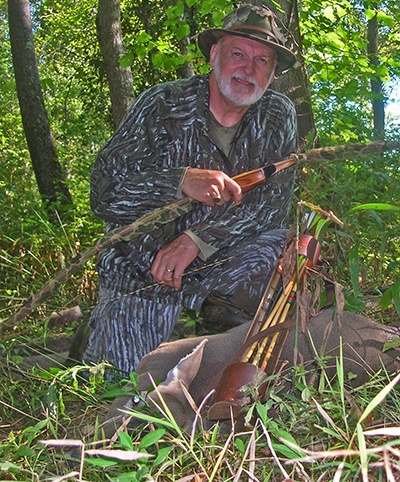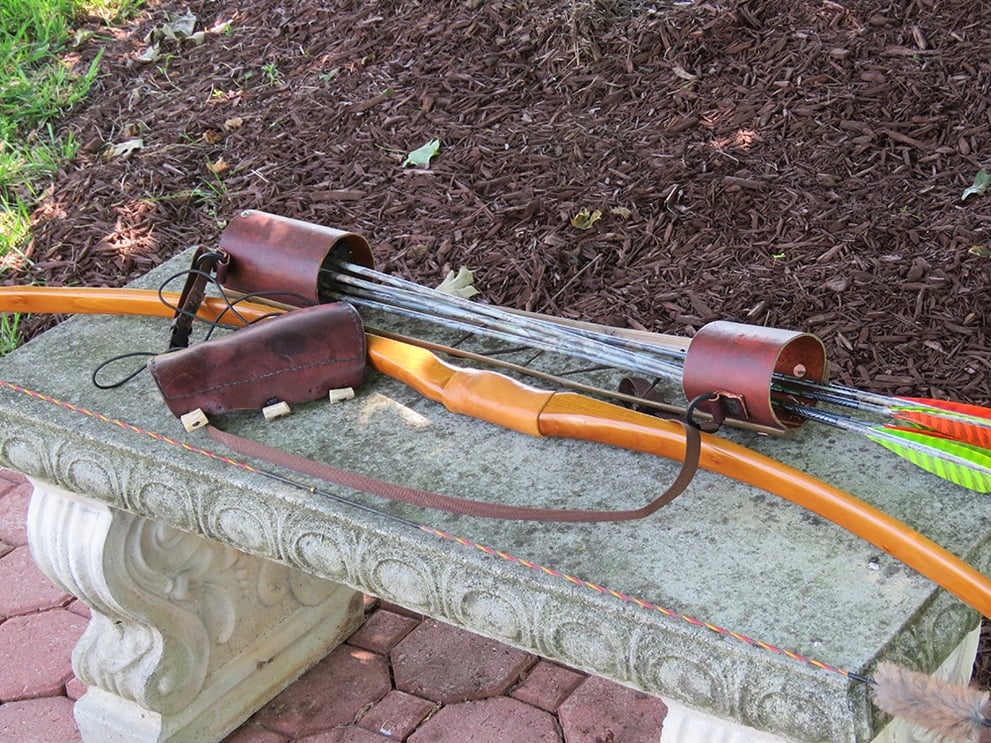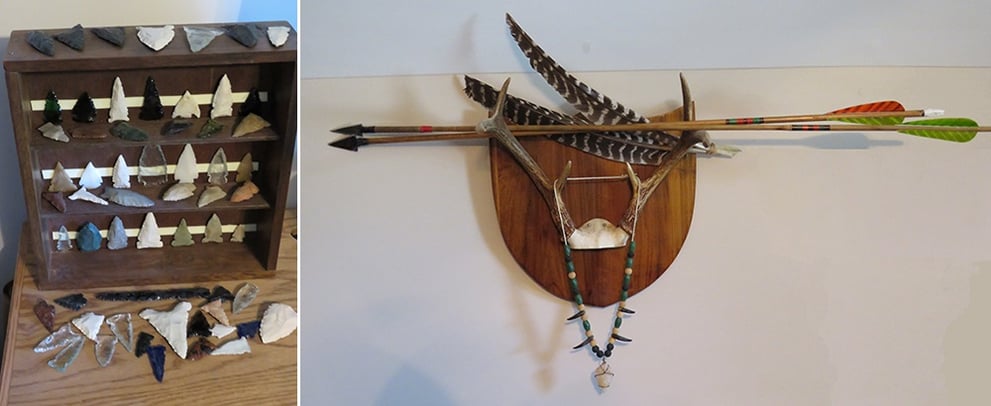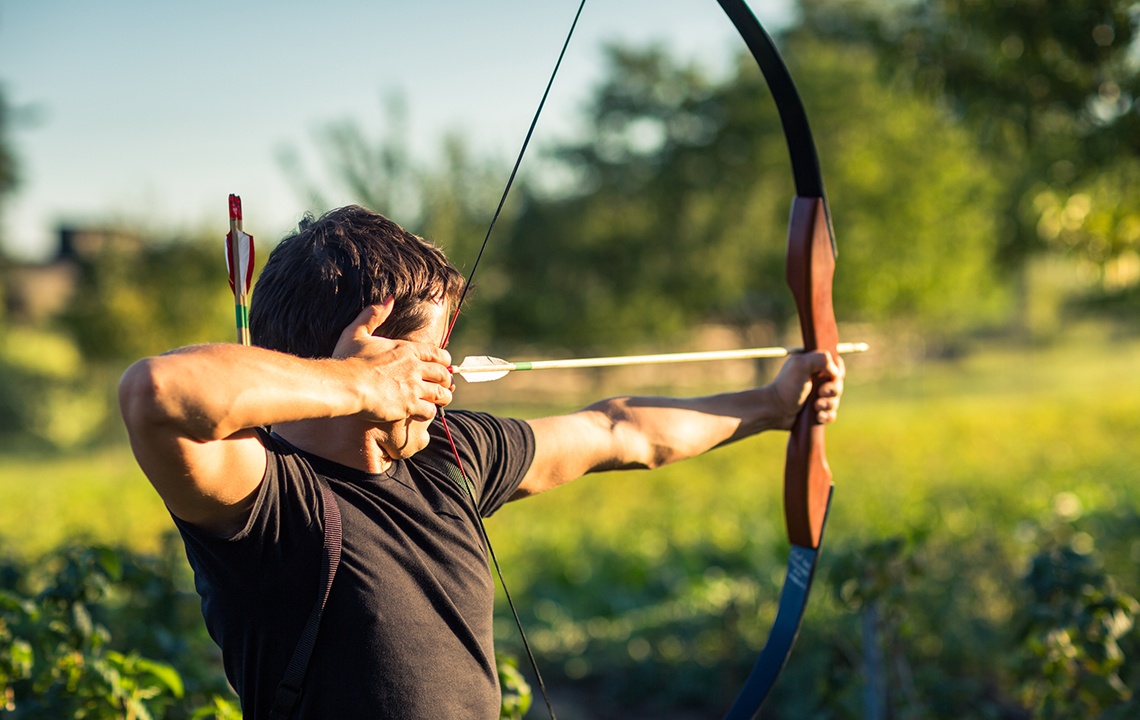Traditional archery is simplistic, but offers challenges that make it the interesting sport that it is. It is a link to the past and devotees are adamant about keeping it true to its roots
 Traditional archery has only changed in minor ways through the centuries. It is true that some bows are made with modern materials, but the hardcore bowyers and followers of the sport are still cranking out handmade bows that are close replicas of those made centuries ago.
Traditional archery has only changed in minor ways through the centuries. It is true that some bows are made with modern materials, but the hardcore bowyers and followers of the sport are still cranking out handmade bows that are close replicas of those made centuries ago.
What types of bows qualify as traditional?
In order to understand traditional archery, a brief explanation is in order: Traditional bows are primarily longbows and recurves. I suppose we should include crossbows as a sub-group, but for the sake of this discussion, let's concentrate on longbows and recurves.
- Longbows are called that because they are long in length. Some English bows were made and are still reproduced up to 72" in length. Most modern longbows are 68" or less. Longbows may be straight-limbed or may have reflex, or both reflex and deflex in the limbs.
- Recurve bows have extreme reflex, which creates a mechanical advantage and increases arrow speed. This is achieved at an increase in stress on the material of the bow. Reflex is when the limbs of the bow curve away from the archer before the bow is drawn in preparation for shooting. Deflex is created when a part of the bow curves from the grip, back toward the archer.
Materials used in construction of traditional bows:

Modern traditional bows are made from many different types of material. Bows made from one piece of wood are called “self” bows. Other bows may be made from lamination of various types of wood or bamboo, wood and fiberglass or all synthetic materials.
Physical demands of shooting traditional bows vs. compound
Many archers today shoot compound bows which utilize cams, pulleys and cables to provide a mechanical advantage that allow the archer to pull back the stiff limbs with high force at the outset, but when the cams turn over, the poundage required to hold a compound bow at full draw can be reduced by 70 to 80 percent.
Traditional archers, on the other hand, experience an increasing level of force required to pull the bow to full draw and must hold the full poundage prior to shooting. For this reason, the physical demand of shooting a traditional bow is usually greater.
Also, compound bows have sights with a peep sight on the string and pins set for different distances on the riser. Most traditional bows are shot instinctively. Shooters of traditional equipment must develop a familiarity with their equipment in order to become accurate. This requires hours of practice. You can read another hunter's perspective on the value of bow hunting and how it improves your hunting skills for any type of hunting going forward, here.
Hunting with traditional archery equipment
Archers planning to hunt with primitive equipment must be sure to use bows of adequate poundage to bring down the intended quarry. Deer hunters should use bows of at least 45 pounds draw weight -- and much more is advisable if the archer is capable of shooting it accurately. I hunt with a 61-pound longbow and it is capable of complete pass-throughs on whitetail deer.
Broadhead selection is important as well as arrow shaft material. Steel broadheads are recommended and single bevel are superior. Some dedicated traditional archers use stone points on bamboo arrows, but they are skilled in using such equipment and know the capability of it. Single bevel steel broadheads rotate on penetration and create a devastating wound channel, resulting in swiftly dispatching an animal humanely.
Keep in mind that the range for hunting with traditional equipment is much less than with compound archery. A maximum range of 25 to 30 yards is suggested for most archers.
The challenge of traditional archery is in getting within range of an animal, not shooting from another time zone.
Where to find the best traditional bows
Traditional bows can be a challenge to locate, but there are some very skilled individuals who make traditional bows and arrows.
I have a laminated longbow made by James Parker that is a joy to shoot. I have taken three whitetail deer with it and it has shot thousands of arrows in the interim. Parker is a long-time flint knapper of considerable skill and produces excellent quality bows for sale. He has a website under construction, Huntworthyproductions.com, and offers bows and various courses teaching outdoor skills in Creston, NC.

Another friend, Chris Cade, is a traditional archer and has taken numerous deer with his equipment and he also has a number of Parker’s bows. Cade lives near Clarks Hill Lake and frequently uses archery equipment to bowfish for carp and gar on the lake. We recently had occasion to harvest some gar from the waters of Little River.
Cade is an excellent craftsman and makes great bamboo arrows with wild turkey fletching andstone points. Thick-walled bamboo is excellent material for arrow construction and has been called “nature’s carbon”. This is a great compliment, as carbon shafts are considered to the be best material currently available for making modern arrows.

Above are pieces of traditional equipment the author made for himself. On the left are some of the projectile points he knapped from various types of stone. On the right are two handmade bamboo arrows with single bevel broadheads that he made from an old lawnmower blade.
Some make their own equipment
Having an interest in primitive skills and teaching others led me to become involved in traditional archery. This includes making bows, flint knapping and arrow construction. Most of my hunting has been with modern arrow shafts, but my first deer was taken with a homemade wooden arrow.
You may never be interested in hunting with a traditional bow, but shooting this type of equipment is very satisfying. I shot a traditional longbow as a boy and later concentrated on hunting with firearms. Later in life, I purchased a compound bow, but was never satisfied with it. I enjoy the simplicity of traditional equipment, and that has become a passion of mine.
As opposed to shooting a gun, you can shoot a bow in your backyard (be sure to have a large backstop for safety reasons). As one ages, if the need arises, a bow with lower poundage can be adopted. Traditional archery is a lifetime sport. There are many excellent female archers, so this is a good sport for both sexes of any age.
All photos except top photo courtesy of L. Woodrow Ross.



.jpg)




















